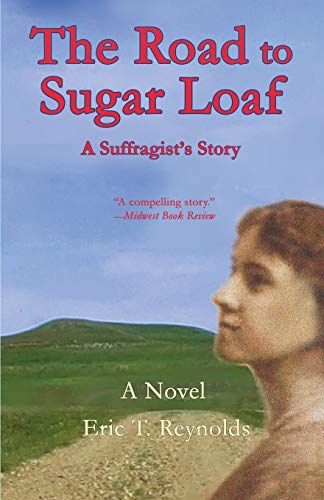The Road to Sugar Loaf: A Suffragist’s Story
Kathryn Wolfe lives in the fictional town of Sycamore Falls, Kansas, where she runs a bookstore with her friend Mary Dodd and tries to foment interest in women’s suffrage. In addition to helping women get the right to vote, she longs to climb a rocky promontory called Sugar Loaf. Unfortunately, an injury makes hiking difficult for her. George Fielding, a local high school teacher, sympathizes with the movement and is an avid climber of Sugar Loaf Hill. The town also has a fair share of men (and a few women) adamantly opposed to the idea of suffrage for women. One of them owns the property where the hill, which serves as a metaphor for the journey toward suffrage, is located, and when George attempts to take the women up the hill, the anti-suffrage owner tells them it’s off limits. It’s bad enough the suffragists don’t have local support. When they go to Washington, DC to protest, Kathryn and Mary wind up in jail, where they are badly mistreated and go on a hunger strike.
Although the book relates important and dramatic events, the novel suffers from a lack of character development and from the inclusion of too many points of view. The stilted dialogue doesn’t help: “With Women’s Suffrage picking up, I will form a Women’s Club and will affiliate it with the National Federation of Women’s Clubs.” Readers will find a more powerful and comprehensive depiction of the hunger strike in the film Iron-Jawed Angels. Unfortunately, this book doesn’t quite hold up the weight of its material.










